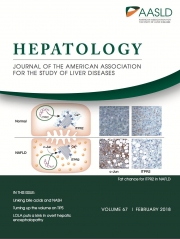Posted on June 13, 2017
Source: Hepatology

High hepatitis C cure rates among black and nonblack human immunodeficiency virus-infected adults in an urban center
Falade-Nwulia O, Sutcliffe C, Moon J, Chander G, Wansom T, Keruly J, Katzianer J, Nathanson A, Marks J, Mehta S, Thomas D, Moore R, Sulkowski M.
Hepatitis C virus (HCV) cure rates have been similar in patients with and without human immunodeficiency virus (HIV) coinfection; however, in the ION-4 study, black patients treated with ledipasvir/sofosbuvir (LDV/SOF) were significantly less likely to achieve cure (90%) compared to nonblack patients (99%). There are limited real-world data on the effectiveness of oral direct-acting antivirals (DAAs) in predominantly minority HIV/HCV coinfected populations. We analyzed HCV treatment outcomes among 255 HCV coinfected patients initiating DAAs between February 2014 and March 2016 in an urban clinic in Baltimore, Maryland. To facilitate adherence, patients received standardized HIV nurse/pharmacist support, which included nurse visits and telephone calls. Median age was 43 years, 88% were black, 73% male, 69% had a history of injection drug use, 45% a history of hazardous alcohol use, and 57% a comorbid psychiatric diagnosis. Median CD4 count was 577 (interquartile range, 397-820) cells/mm3 ; most (97%) were on antiretroviral therapy, had HIV RNA <20 copies/mL (87%), and were infected with HCV genotype 1 (98%). Over 60% had significant fibrosis (Fibrosis-4 Index score 1.45-3.25 [44%] and >3.25 [17%, cirrhosis]) and 30% were HCV treatment experienced. The majority of patients received LDV/SOF with or without ribavirin (91%) and were treated for 12 weeks. Overall, the sustained virological response rate was 97% (95% confidence interval [CI], 93-98) and did not vary by race (black, 96% [95% CI, 93-98]; nonblack, 97%, [95% CI, 83-99]), history of injection drug use, alcohol use, or psychiatric diagnosis.